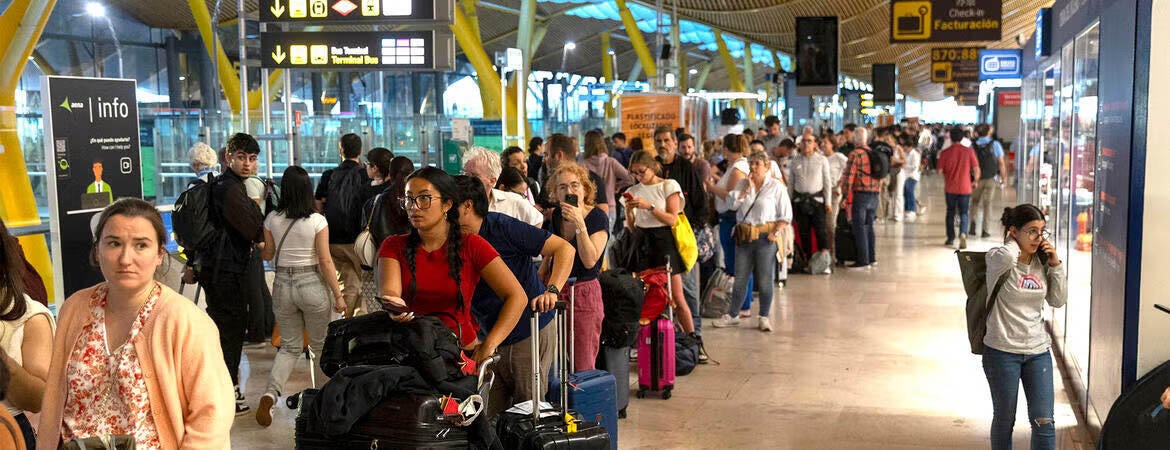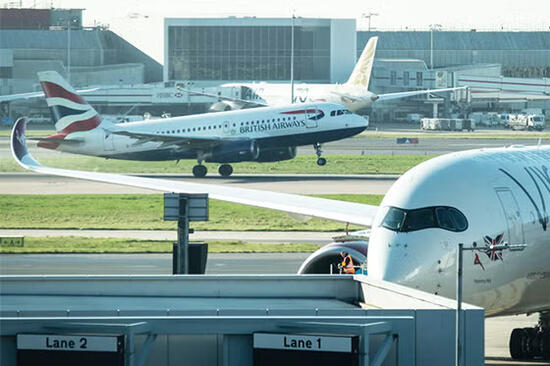

A comprehensive study spanning two decades and four continents found that private equity ownership significantly boosts airport performance, while other forms of privatization often fall flat.
The study, conducted by UC Riverside School of Business assistant professor Hyeik Kim in collaboration with researchers at three other universities, examined ownership transitions at more than 2,400 airports across 217 countries. It found that when private equity firms take over airport operations, travelers benefit from greater efficiency, more flights, and better service.
Private equity ownership differs from other forms of private ownership, such as airports run by an individual, family, or company. It occurs when investors pool their money to acquire an airport, improve it, and then sell it after a set period, often five, seven, or 10 years.
“Private equity partners have an incentive to make a profit, so they invest in expanding terminals, attracting more flights to and from more destinations, and bringing in better vendors for food and other traveler services,” Kim said.
Under private equity ownership, airports experienced dramatic operational gains. After a private acquisition, passenger traffic surged by an average of 87%, and flights increased significantly. The average number of passengers per flight—a key measure of efficiency—jumped by 21%.
Interestingly, the study’s findings run contrary to other business acquisitions, in which new owners often cut staffing and customer service to increase profits. In fact, private equity-owned airports were less likely to cut staff or services, more likely to win customer satisfaction awards, and saw fewer flight cancellations.
Private equity firms also brought in more savvy management practices, such as charging airlines higher fees to use runways at peak times of day and offering discounts for off-peak hours, Kim said. For example, a coveted 9 a.m. takeoff would cost more than a late-night “red-eye” departure at 11:50 p.m.
Private equity-owned airports thrived in competitive markets. When a rival airport was nearby, private equity firms were more likely to invest and innovate to win over airlines and travelers. These improvements often expanded the overall airport market rather than simply shifting traffic between locations.
The study’s findings come at a time when governments worldwide are increasingly turning to the private sector to finance and manage public infrastructure. Since the 1980s, more than 400 airports have been privatized, including many through long-term leases or outright sales.

Because airports in the United States and China are mostly government-owned for security reasons, they served as a control group and a basis for comparing different kinds of private ownership, Kim said.
To reach their conclusions, the researchers built a robust panel dataset of airport performance metrics spanning 1996 to 2019. They used a difference-in-differences methodology, a common technique in economics that compares changes over time between a treated group and a control group.
The benefits of private equity ownership were most pronounced in countries with strong governance and low corruption. In contrast, airports sold to non-private equity firms in high-corruption countries often stagnated or performed worse.
The distinction appears to lie in incentives and oversight. Private equity firms often have reputations to uphold with global investors and face compliance requirements such as the U.S. Foreign Corrupt Practices Act. Airports with other forms of ownership, particularly in poorly regulated environments, may lack such constraints.
The study, titled “All Clear for Takeoff: Evidence from Airports on the Effects of Infrastructure Privatization,” was published by the National Bureau of Economic Research. In addition to Kim, the authors are Sabrina T. Howell of Harvard Business School, Yeejin Jang of the University of New South Wales, and Michael S. Weisbach of Ohio State University.
The researchers caution against overgeneralizing their results. Airports are unique in their economic and regulatory importance and face intense scrutiny—factors that may make them operate better under private equity ownership than other public-serving facilities, such as schools and hospitals.
__________
Header photo: Travelers queue for customer care service at Barajas Airport on April 28, 2025 in Madrid, Spain. (Photo by Pablo Blazquez Dominguez/Getty Images)
